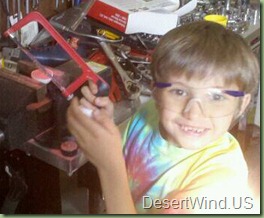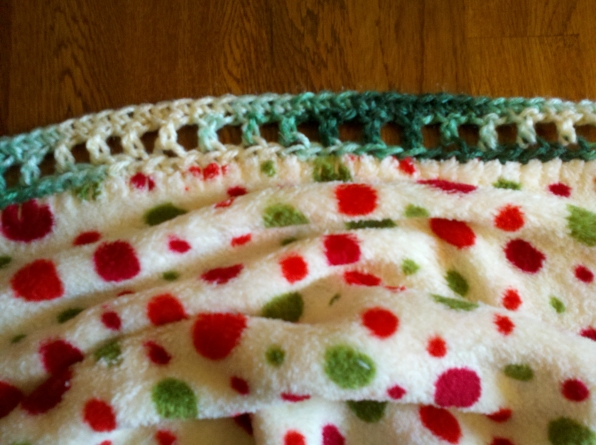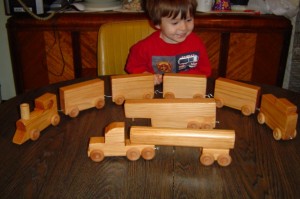For the low, low price of a laundry basket, Rubbermaid tote or similarly sized cardboard box, you too can start a Rube Goldberg-esque Inventor’s Kit for your child.

Step 1: Get a laundry basket-sized container.
Step 2: Fill!
The choice of odds and ends is up to you, and limited only by your creativity and common sense.* Cleaned food containers are a good start, but should be supplemented with other connectors and gadgets. Some suggestions for
Materials:
- Glass spaghetti jar with lid
- Plastic sour cream/yogurt/dip containers with lids
- Baby food containers
- Juice/Milk/Soda cartons/bottles
- Foil pie plates
- Candle
- Matches*
- Knife*
- Rope – wound neatly
- wire (insulated and uninsulated) – wound neatly
- Nails, screws, nuts & bolts (~10 each)
- A few feet of aluminum foil
- An old Mylar balloon
- Paper towel/Toilet paper tubes
- Squares of corrugated cardboard and cardstock (old boxes/old cereal boxes)
- Small pad of paper (for plans and for projects)
- Pencil, pen, permanent marker
- Scissors
- Paper Clips
- Masking tape
- Pipe cleaners
So far, these are just things we usually have laying around the house. For added interest, head to Radio Shack, Harbor Freight, etc. and pick up:
- LED Lights
- Battery holder
- Batteries for your battery holder
- Small light bulb holder
- Small light bulbs
- Wire leads with alligator clips
- Pulleys
- Gloves
- GOGGLES**
 *This harkens back to previous posts where I’ve discussed “knowing your child’s limitationsâ€. You know your child best. I’ve worked with 4th and 5th graders who could easily handle matches and knives with supervision, and I’ve no reason to suspect that mature and supervised kids even younger than this would have any problems with them. Actively supervised children should find it very challenging to burn the house down. If, however, you find that your child is particularly or distressingly gifted in this one respect, please plan (and store) your Inventor’s Kit accordingly.
*This harkens back to previous posts where I’ve discussed “knowing your child’s limitationsâ€. You know your child best. I’ve worked with 4th and 5th graders who could easily handle matches and knives with supervision, and I’ve no reason to suspect that mature and supervised kids even younger than this would have any problems with them. Actively supervised children should find it very challenging to burn the house down. If, however, you find that your child is particularly or distressingly gifted in this one respect, please plan (and store) your Inventor’s Kit accordingly.
**This ended up at the end of the list, but it really should be at the first. Get goggles, especially if you or your child is planning on whacking, banging on, or hammering anything, mixing chemicals to see what will happen, or cutting/breaking anything like rocks, glass, tile, brick, etc. I’m big on this. I’ve seen the edge of a rock hammer sliver off and fly into a classmate’s eye on a college geology trip. Vision isn’t something to take chances with, especially when you get a pair of safety goggles for $3-$5.
Store the small items in some of your glass/clear plastic jars.
Now you and your child are ready to invent, engineer and experiment. As an added advantage, you’ll now have a wealth of available supplies when you find out that while your offspring’s teacher assigned a science project two months ago, the child in question conveniently “forgot†about it until the night before the due date. If you’re thinking that your child would never do this, well then, just pat yourself on the back and put one of these kits together anyways, because your child’s best friend’s mom is probably headed over to your house to borrow it right now.
I’ve purposely left out chemicals, even household ones such as baking soda and vinegar. I think it’s best to keep them stored in their original container, and keep them stored as you would store any potentially harmful product.
Coming soon: Experiment ideas using your kit!
Comment here with other items you might add to your inventor’s kit!
 Strip baby to diaper.
Strip baby to diaper.





 1) What happens to the volume of water when it freezes? Mark the level of the water in your container(s) before freezing.
1) What happens to the volume of water when it freezes? Mark the level of the water in your container(s) before freezing.








